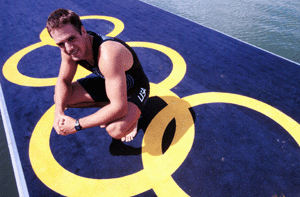Pankration's Road to the Olympic Games by Nick Browne First introduced into the Ancient Olympic Games during the 33rd Olympiad in 648 B.C., pankration soon became known as the king of Olympic events, with its champions retiring in luxury after successful careers, supported by the city-states they had represented. Pankration enjoyed that exalted status for over 1,000 years. Today, a world-wide movement is underway to restore pankration to its rightful place - as a full medal sport in the modern Olympic Games. The restoration of pankration to the Olympics may seem an obvious one - after all, the events of the Ancient games; footraces, boxing, wrestling, pankration, the pentathlon, chariot racing and others, celebrated and tested the battle-skills of competitors - and pankration was the king of those Olympic events. Now, only pankration remains unrepresented in the Modern Olympics (chariot racing being represented in other equine events). And as World Pankration Federation President Craig Smith observes, "When you look at some of the things that are Olympic events today, it's unbelievable that pankration is not." Modern pankration owes its existence to Jim Arvanitis, a Greek-American who developed an interest in the ancient sport and combat training of his ancestral homeland. His interest led to his developement of the system of Mu Tau Pankration, a complete martial training system which included a full spectrum of skill sets accompanied by a cultural and philosophical dimension that makes Mu Tau a true martial system. Since the early 1970's, Arvanitis, who coined the modernized term pankration (from the old pagratio), carried the torch of pankration essentially alone, driven by the pride he had in his Greek heritage and his dedication to the system he had developed. His ground-breaking promotion of applicable mixed martial arts preceeded the current MMA movement by almost three decades. In the late 1990's, a movement developed to return pankration to the Olympic Games. Driven primarily by karate practitioners, the Greek-born movement soon spread to the United States, where the USA Federation of Pankration Athlima was formed to serve as the US representative of the Greek parent organization, the International Federation of Pankration Athlima. Though the organizations initially pulled many dedicated and experienced martial artists into the movement, as well as high profile MMA fighters and UFC veterans such as Ken Shamrock, Keith Hackney and Bart Vale, internal problems soon developed. Professional jealousies emerged. Inadequately trained referees were accused of favoritism in tournaments. USAPF tournament promoters didn't pay their advertising bills. When Grandmaster Publisher Craig Smith, an early supporter of the IFPA, discovered that the IFPA's claims that pankration was to be re-entered into the Olympics in 2004 at the Games in Athens were false, he withdrew his support and ran a series exposing the fraudulent claims. Resignations followed, and the movement that had once seemed so promising now seemed to be just another scam by promoters interested in making money off the dreams of martial athletes around the world. Though the pankration movement faltered, interest in pankration continued to grow. In 2000, seeing that no one had put together a legitimate organization to further sport pankration for the many athletes wanting to compete in it, Craig Smith formed the World Pankration Federation in order to establish a central organization and sanctioning body to support and oversee the growing international movement. Smith recruited some of the most respected martial artists in the country to serve as advisors to the organization, including Jim Arvanitis, and selected a central corp of international referees whose integrity was above reproach. Based on the concepts of Honor, Integrity and Fair Competition, the WPF promoted the highest ideals of amateur athletics. As the movement has continued to grow under the WPF, talk of pankration's re-entry into the Olympic Games has resurfaced. While Smith says that is indeed his ultimate goal, he cautions against becoming too impatient or making that a central issue in the development of pankration. "The primary purpose of the World Pankration Federation is not to achieve pankration's re- introduction into the Olympic Games", says Smith. "Rather, it is to provide a proper organizational structure in which pankration athletes can compete in local, regional, national and international competition, developing their skills and the sport with honor, integrity, and in the best spirit of fair comptition." And if that is accomplished, says Smith, the goal of re-introducing pankration back into the Olympics as a full medal sport will come as a natural result, and in its own time. "Pankration will not be in the 2004 Olympics," says Smith. "Whether it will be in the 2008 or 2012 Olympics, I don't known and neither does anyone else. What I do know, is that pankration's schedule for re-entering the Olympic Games is far less important than the individual athletes being properly served and supported by their organization as they strive and compete in this great sport. The athletes are what are important - not the organization, the medals or the hype. Athletics is about competition, and it is the competitors who should be honored and respected for their endeavors. That's what the WPF is all about." So somewhere in gyms, dojos and clubs throughout the world, potential Modern Olympic Pankration Champions may be training right now. But whatever their level of competition, the World Pankration Federation is determined that they will be able to do so with respect for themselves, their organization, and pankration. |

">
">
">
">